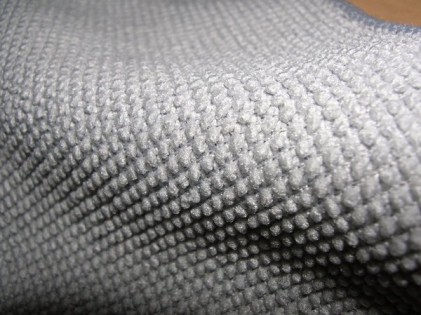WHAT IS MICROFIBRE?
Microfibre is a synthetic fiber, usually produced using polyester, polyamide, or a combination of the two. Fibres are measured in denier, which is a reference to their linear mass. Sound awesome? We didn’t think so.

The easiest way to think of microfibre is that they’re finer than a strand of silk, which is 1/5 the diameter of a human hair. So in other words, it’s pretty small.
Ultra-fine fibres have been in production since the late 1950’s, but weren’t commercialized until the production of Ultrasuede in the 1970’s. Microfibres finally achieved universal success after their adoption in Sweden and later the rest of Europe during the 1990’s and now they’re a commonly accepted part of our cleaning arsenals.
WHAT IS THE APPEAL OF MICROFIBRE?
Because producers of microfibre have control over the final product, they can use various techniques to achieve fibres that are soft, tough, absorbent, water repellent, or more – the applications are broad. We’ll stick to our favorite use: cleaning!
To achieve great cleaning results, microfibres are split during production. If you looked at a cross-section of the fibre it would look like an asterisk whereas a cotton fiber would just look like a circle. Those grooves allow the cloth to trap dirt and absorb liquid as well. An additional benefit of microfibre compared to cotton is the absence of lint. If you’re cleaning glass or any highly reflective surface like granite, stainless steel, or the surface of a car you’ll want to use microfibre.
Most products won’t mention whether or not the fibres are split, but you can easily test with a few drops of water. Put the water on any hard surface and try to push it with your microfibre cloth. If the water is absorbed then you’re dealing with split fibres. If the cloth pushes the water around then the fibres are whole, and your cloth is not meant to be absorbent.
Are you a fan of microfibre cloths for cleaning? Let us know in the comments!